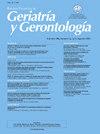功能恢复单位全国地图。FUN-RUN地图项目
Q3 Medicine
引用次数: 0
摘要
功能恢复单元(fru)为受发病率相关或卫生保健系统引起的功能下降影响的成年人提供基于床的功能恢复。尽管有强有力的证据支持其有效性,但FRU在国家范围内的发展并不均衡。该项目旨在确定2024年西班牙fru的领土可达性。该项目的目标包括描述结构-过程-结果指标,并收集工作人员对其中一些指标的意见。方法采用加密在线平台上的试点问卷设计横断面研究,包括社会人口统计学、中心特征、单位特征和员工意见。纳入标准包括由MIR专业医生管理的以老年康复为重点的公共资助医院单位。100家ic医院(ICH)被确定为符合国家医院目录的潜在资格,55家中心符合纳入标准,其中确定了临床裁判。结果老年医师(81.25%)共完成问卷32份,回复率58%,平均从事fru工作13.4年。地域代表性包括11个省和8个自治区。87.5%的fru位于非ICH,平均经验为22.69年。在所代表的省份,每1000名65岁的居民有0.52张床位,每1000名80岁的居民有1.7张床位,全国比例为0.2张床位/1000名65岁和0.7张床位/1000名80岁。员工比率分别为15.94张/医生及14.91张/护士,与裁判员理想的14.3张/医生及11.7张/护士有轻微差异。详尽地描述了结构、过程和结果指标。结论需要形成全国共识,整合一般建议/流程、质量标准分层优化单位效能和效率、患者意见提高护理质量和水平。本文章由计算机程序翻译,如有差异,请以英文原文为准。
Functional recovery unit national map. FUN-RUN Map Project
Introduction
Functional recovery units (FRUs) provide bed-based functional reablement for adults affected by morbidity-related or healthcare system-induced functional decline. Despite strong evidence supporting their efficacy, FRU development has been uneven within national territory. This project aims to identify territorial accessibility to FRUs in Spain in 2024. The project's objectives included describing structure–process–outcome indicators and collecting staff opinions on some of these metrics.
Methods
A cross-sectional study was designed using a piloted questionnaire in an encrypted online platform, comprising sociodemographics, center-characteristics, unit-characteristics, and staff opinions. Inclusion criteria included publicly funded hospital units focused on geriatric rehabilitation, managed by physicians with MIR specialty. One hundred IC-Hospitals (ICH) were identified as potentially eligible within the National Catalogue of Hospitals, 55 centers meeting inclusion criteria where clinical referees were identified.
Results
Thirty-two questionnaires completed (response rate 58%) by geriatricians (81.25%), with an average of 13.4 years of FRU-experience. Geographic representation included 11 provinces and eight autonomous communities. 87.5% of FRUs are located in ICH and have an average experience of 22.69 years. 0.52 beds per 1000 inhabitants >65 years and 1.7 beds per 1000 >80 years were described in the provinces represented, and a national ratio of 0.2 beds/1000 >65 years and 0.7 beds/1000 >80 years. Staff ratios of 15.94 and 14.91 beds/doctor and beds/nurse slightly differ from the opinion of referees ideal of 14.3 beds/doctor and 11.7 beds/nurse. Structure, process and outcomes indicators are exhaustively described.
Conclusions
A national consensus is needed, integrating general recommendations/processes, Quality-standards stratification to optimize effectiveness and efficiency of these units and patients’ opinions to improve care quality and standards.
求助全文
通过发布文献求助,成功后即可免费获取论文全文。
去求助
来源期刊

Revista Espanola de Geriatria y Gerontologia
Medicine-Medicine (miscellaneous)
CiteScore
1.90
自引率
0.00%
发文量
62
审稿时长
85 days
期刊介绍:
Una revista de gran prestigio por sus artículos originales de investigación y revisiones. Permite cubrir todas las áreas de la medicina pero siempre desde la atención al paciente anciano, y está presente en los más reconocidos índices internacionales.
 求助内容:
求助内容: 应助结果提醒方式:
应助结果提醒方式:


